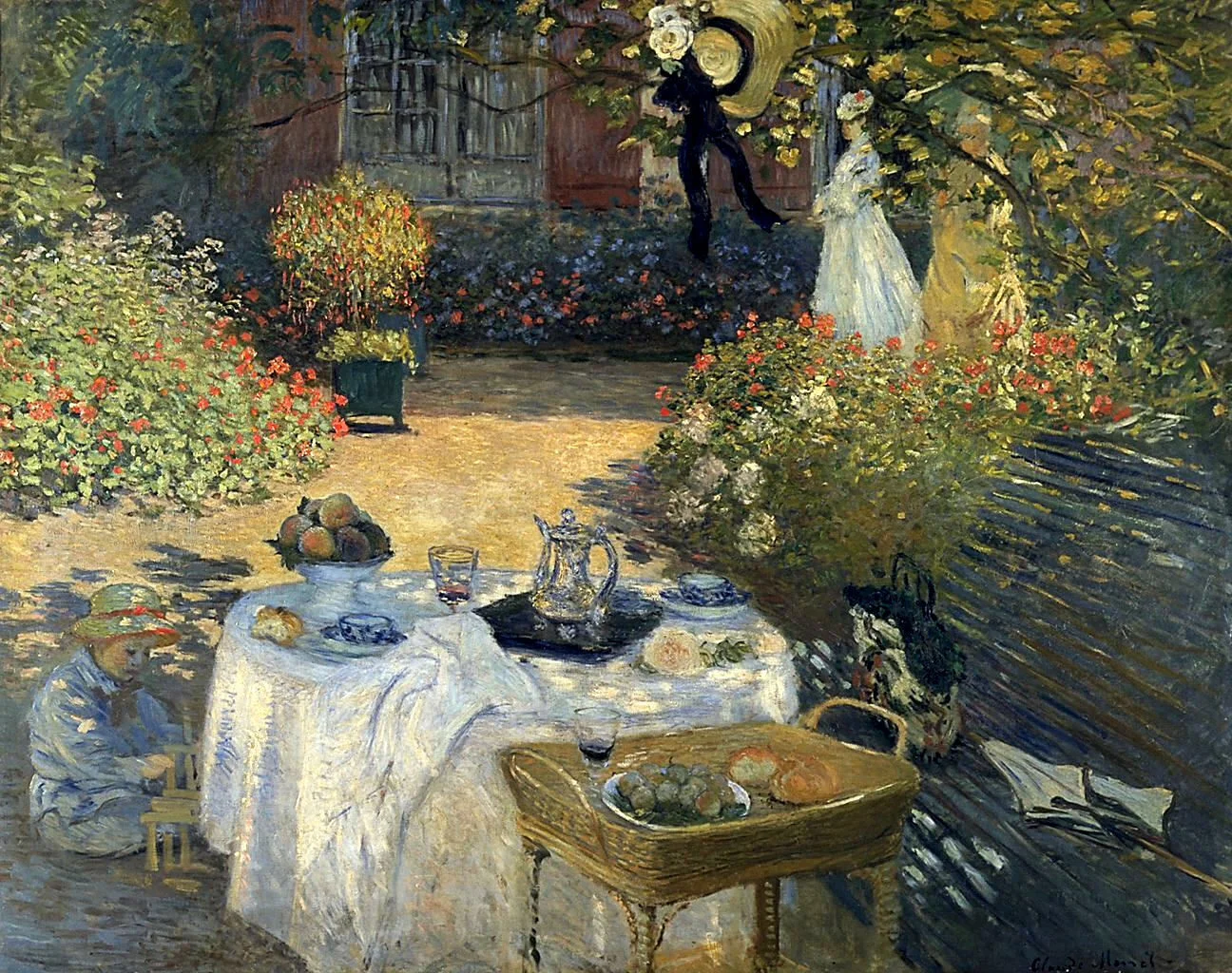A Look Into Claude Monet’s “The Lunch” | History and Characteristics
Artist: Claude Monet
Title: The Lunch
Period: Impressionism
Date: 1873
Historical context:
Impressionism first formed in the 1860s when a group of young men—who trained together under the standard Neoclassical style—banded together to render a new, nature-centric artistic movement.
The style of Impressionist paintings differed greatly from Neoclassical art. Impressionist painter, Frederic Bazille, is quoted in Nathalia Brodskaya’s book, Impressionism, about this change of style saying, “Large-scale classical compositions are over. The spectacle of everyday life is more fascinating.”
Indeed, the budding Impressionists wanted to step away from the seemingly trite, formal Neoclassical style and pave the way into modernity by focusing on the beauty of daily life.
Once they had finished their formal training under the master painter Charles Gleyre: Monet, Bazille, Renoir, and Sisley, among others, excitedly discussed and argued their ideas for their new natural life-themed artistic movement.
And thus, over a round table at cafe Closiers des Lilcas, the concept for Impressionism was born.
Impressionism Characteristics:
Impressionist style stands apart from other artistic styles largely due to the technique in which paint is applied to canvas.
Characteristically, the Impressionists opted for thick, staccato brushstrokes that are visible to the eye and create a depth of color and light.
“Monet brush strokes up close.” Source: Pinterest
In terms of palette, they favored neutral colors, occasionally featuring a brighter, more eye-catching color in small doses.
The Impressionists sought to capture their own transient glimpse, or impression, of the world around them. For this reason, they typically chose natural subject matter such as landscapes or people going about their lives.
As Bazille had said, Impressionists were fascinated by everyday life. In an effort to immortalize passing moments in time, they effectively exposed the brilliant essence of life out of the seemingly mundane.
The Lunch Overview:
The Lunch—or Le Déjeuner—is one of Claude Monet’s later paintings, produced around 1873.
During this time in his career, Monet typically scaled down the size of canvases and preferred to produce works smaller in size; however, The Lunch was an exception. Painted as a decorative panel, it was displayed in the Impressionist exhibition of 1876.
The subject is an “ordinary” scene—the quotidian activity of taking a midday meal. The people in the painting are not the principle focus of the piece, but instead take on the almost ornamental quality blending softly into the scenery. Rather than asking its observers to contemplate the people within it—this work asks us to contemplate their lives, their surroundings, and their daily activities.
Perhaps the most visually compelling part of the picture is the pool of light gathered on the earthen path—the eye is almost more drawn to that little gathering of light than to the lunch table, which understandably is in the shade.
The colors, nevertheless, are muted and evenly distributed, causing the eye to take in the scene as one harmonious whole—the yellowy hues of the fruit tray, the child’s hat, the women’s dress, the path, and the leaves are strewn throughout the canvas, along with bits of red in the flowers, the wine, and the hats—the muted white of the shady table cloth, the parasol, and the dress of the other women strolling under the trees, even the red of the house is soft and understated.
The soft brush strokes cause the shapes to blend into one another. There is no singular subject or focus—we are instead given the idea or the impression of a moment in time—a moment that perhaps went slowly by.
What do you think about “The Lunch”? Does anything in particular catch your eye?








